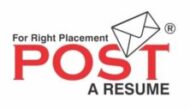Employers today, are facing acute paucity of skilled workforce, and the war for talent is likely to get much fiercer. “Employer branding is an important strategy that helps organisations in attracting as well as retaining talented workforce”, says Mr. Swadesh Behera, Director of Human Resources at Boston Scientific India (BSCI).
Matter of Choice
An effective employer brand is crucial to gain sustained competitive edge in the market. “If you have a better brand or a certain set of attributes associated with you, your ability to attract talent is high”, explains Mr. Prashant Bhatnagar, Director of Human Resources at Sapient India. Candidates identifying with the organisation’s values become employees by choice and not chance, and are likely to be more loyal, delivering higher levels of quality and service. It also helps in checking attrition, as Mr. R Elango, Chief Human Resources Officer at Mphasis puts it, “employees will stay back because they like some aspect about the company, or are getting a particular experience which their peers are not”. So, the branding process is actually aimed at influencing an employee’s decision of joining, being motivated or remaining with a particular organisation. “It is kind of similar to how you purchase a product. You look at multiple choices, and then finally decide to buy that product for its certain peculiar attributes”, elucidates Mr. Elango. Just like how a strong product brand signifies high level of quality/service associated with it, organisations with strong corporate identity evoke certain desirable qualities in the minds of employees, giving them a favourable impression of working there. “An employer brand which stands out and distinguishes you will certainly create the right impact” suggests Mr. Bhatnagar, especially in the wake of the wide range of opportunities available for employees.
Enhancing Job Appeal
Employees usually look for career opportunities, job security, good salary, work-life balance, professional training and development, good organisational values and management, while corporates build brand identities around these same factors. Consider Google: ranked as one of the top most-wanted employers in the world by Universum, a global leader in employer branding, it offers a unique college-like atmosphere where employees can indulge in a range of recreation activities like beach volleyball, football, videogames with other facilities like gourmet restaurants, free wi-fi enabled coaches for transporting employees, reimbursements for hair-cuts, personal concierge, laundry services, on-site physicians and dentists, childcare and notaries. It also has massage rooms and allows pets at work for limited hours. No wonder why, candidates make a beeline to join this ‘happening’ place. Back home, Sapient India that was on a talent-branding drive was quite successful in stirring up much interest in the company. Mr. Bhatnagar recalls, “the entire idea was to showcase Sapient as a place which is fun, young and dynamic, where diversity of views and ideas are bred and encouraged”. However, though a hip-hop, fun-loving work culture may go down well with college graduates, the same may not always hold true for mid-level or senior-level positions. In such a scenario the same organisation can project different brand images for different departments or say, different group of employees. The branding and value proposition of a company vying for an entry-level employee would be essentially different if it were to attract well-experienced professionals.
Branding Process
In essence, an important point stands out while branding an organisation for employment market purposes – Mr. Behera explains, “You may look at what your unique strengths or selling points are while designing the employer brand.” It is, however, important to “marry” these with the long-term vision of your organisation, he explains further, stressing the importance of building the brand image for the longer run. For instance, a leading private Life Insurance player has been developing a long-term customised employee value proposition based on five parameters of wealth, position, respect, development and social status. The aim is to help its present and prospective employees to look beyond mere career or money and assess the organisation on more long-term aspects.
Consistent Values
Building a strong reputation may be difficult; but sustaining the image over time could be even more daunting. Consistency is the key – you need to deliver what you have promised. “Stay true to your proposition” cautions Mr. Behera. Merely creating a strong brand image through advertising, exaggerating the attractiveness of a workplace would just not be enough if your employees do not actually get to live the experience. “It may so happen that over a period of time, your employees may actually turn dismissive of you and even start ridiculing the organisation”, warns Mr. Bhatnagar. Not living up to the promises may leave employees disgruntled and even feel cheated. Moreover, they may start resenting the decision to join the organisation and may start looking for other options.
End Note
With the demand-supply gap of employable talent widening, strategies such as employer branding are growing in importance. With a range of choices available to the best talent, employers would need to differentiate themselves with a strong brand identity. Organisations that build effective employer brands will be able to acquire key sources of talent and retain them over a longer-run.
Publisho Theme | Powered by Wordpress

